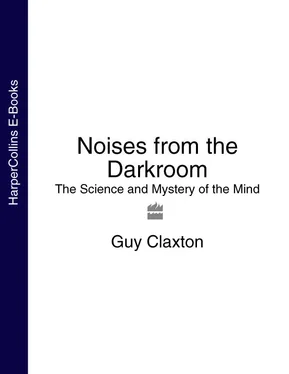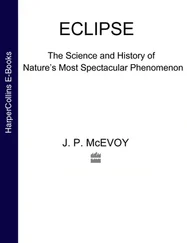But let us start at the beginning, with a résumé of the evolutionary history of humankind – a fuller version of which comprises the first part of this book – to orientate you. The twists and turns of our long evolution have bequeathed us a mind that, below the surface, is a curious tangle of abilities and limitations, strengths and weaknesses. It is not an instrument of elegant design, but a ramshackled raft, constructed out of a hodge-podge of materials, each of which happened to float by at a time then they could be used. If we could put the human mind in dry dock, take it to bits, and start again from scratch, we would never come up with the Heath Robinson contraption that has been handed down to us.
The vast majority of this mental raft – and the vast majority of its intelligence – lies below the surface. Conscious awareness arrived, in the course of evolution, probably with the evolution of active hunting as a method of catching food, and probably earlier and more clearly in species that were prey than those that were predators. And it emerged as a corollary of a particular kind of ‘alarm reaction’. But with the development of social living, of language, and of the technology that could make life stable and relatively affluent, consciousness got appropriated by a variety of other systems within the mind, until today it has almost (but not quite) lost its original nature and purpose. In the detailed unravelling of this story, we can find an adequately complicated diagnosis of where and how the mind missed its way.
The mind is a specialized development of the brain, which is a specialized development of the body. The current myth of the body as a mobile pillar of meat piloted by an individual blip of conscious intelligence is false and harmful. Biology is telling us clearly that the body, with all its physical and psychological accoutrements, is a system, an intricate dance of processes and interactions that depends for its existence on continual penetration and perturbation by wider systems of which it is an inextricable part. The body ‘knows’ this; the brain ‘knows’ it’; the mind ‘knows’ it. Only the self-conscious ‘I’, sitting atop this mountain of interdependency, denies and ignores it. When ‘I’ is switched off, the brain-mind immediately recalls what it had affected to forget. ‘Ah yes,’ it whispers to itself; ‘I remember. I belong .’
If the essential mystery at the heart of human experience has somehow been squeezed out of the myths by which we are living, then science – twentieth-century empirical science – can re-mind us of this, just as powerfully as Mozart or meditation. ‘The mind’s new science’, as Harvard psychologist Howard Gardner has dubbed it, is doing just that. It shows us that mysticism is necessary, and mystery is logical.
TWO Body-Building: The Origins of Life
Evolution is a change from a no-howish untalkaboutable all-alikeness to a somehowish and in general talkaboutable not-all-alikeness by continuous sticktogetherations and something-elseifications.
William James
The pickle in which humankind currently finds (and loses) itself is due to the mind, and the mind is due to evolution. The conscious human mind cannot be understood just by looking at the way it is now. It is the tip of a vast evolutionary iceberg that has taken millions of years to form. As in all evolution, the later builds on the earlier; it can modify what went before, but it can never replace it. We have become so preoccupied with consciousness that we have forgotten the unconscious bulk below the surface. Minds are merely the software of the intricate biocomputers we call brains. And brains are the central organizing systems, the communications rooms, of high-tech bodily communities that have multiple goals and needs, and which live in environments that afford almost limitless opportunities. And all this is in aid of smart, tenacious, replicating molecules, who have it in their nature to persist and to breed. The abilities to solve crossword puzzles, to bungee-jump, and to have rows with our children are recent curiosities, balanced precariously atop a tower of earlier discoveries and developments.
Already, in this very first paragraph, I have slipped into using the most widely used metaphor for the brain-mind – the computer. And while in the most general sense ‘computing’ is what the brain-mind does, the analogy can be terribly misleading. Computers have no intrinsic goals. The programs that tell the machinery what to do, and what to ‘want’ to do, arise not from an evolutionary source, but from the mind of the programmer. In the case of we human beings, however, the brain and its mind developed over millennia as tools for helping bodies, and the genes that designed them, to survive. Bodies are made of a kind of stuff that needs to keep trading, in a whole variety of different ways, with the world around it, if it is to persist. Computers can be left switched off for years and (all being well) will leap into action again, as if no time had passed at all, when they are next turned on.
Human beings and other animals grow and evolve. Computers get redesigned, sometimes from scratch. People need to eat to live. No computer has yet been discovered taking a bite out of its desk. There has been a film called The Cars that Ate Paris , but not yet one called The Laptops that Ate IBM . You can understand everything important about a computer by looking at it ‘now’. You can understand very little about the human mind without investigating how it came to be. Computers can be built out of a variety of different materials, and they may end up doing very similar kinds of things. The operation of brains and minds is entirely dependent on the stuff of which they are made, and the worlds they and their ancestors grew up in.
Yet the conscious mind’s view of itself downplays its evolutionary history, and its unconscious substratum, shamelessly. Part of the problem with the human brain-mind is that it has come to see itself as a kind of computer – without embodiment, without any history other than its own experience, without ecology. It has even come to identify only with what comes up on the screen of consciousness, and to ignore its own circuit boards and microchips. To straighten the mind out, it is necessary to remind it of its relationship to its brain, its body, its world and its ‘unconscious’. That is where we have to start.
Let us briefly go back right to the beginning of life: to the primaeval ooze. A very long time ago – 4 billion years or so – there was no life; only an atmosphere containing simple molecules such as methane, ammonia, carbon dioxide, nitrogen and water vapour. There was no free oxygen, no ozone layer between the Earth and the sun, so powerful ultraviolet rays could enter the atmosphere unfiltered. Since Stanley Lloyd Miller’s classic experiment in the early 1950s, it has been known that some at least of the basic molecular building blocks of life – the amino acids – can be produced by subjecting mixtures of these gases to the levels of ultraviolet radiation and the types of electrical discharge that would have been around in those early days. Simple chemical processes would have enriched the prehistoric broth to the point where it contained several of the necessary chemical ingredients of life. 4
It is a long way, though, from simple proteins and sugars to the molecules and structures that are characteristic of all living systems, from amoebas to Buddhas. There are 200 or so of these essential ‘molecules of life’, and they collaborate with each other in such intricate and self-supporting ways that the whole structure of relationships on which life depends seems to hang together like a multidimensional archway – remove one piece and the whole thing collapses. And while some of them can be found in different brands of primordial soup, many of them, in order to be synthesized, seem to need exactly the kind of environment provided by the living cellwhose origins we are eventually trying to account for. We are faced with a classic ‘Chicken and Egg’ situation: in order to explain how cells were made, we seem to need to postulate the existence of cells!
Читать дальше












